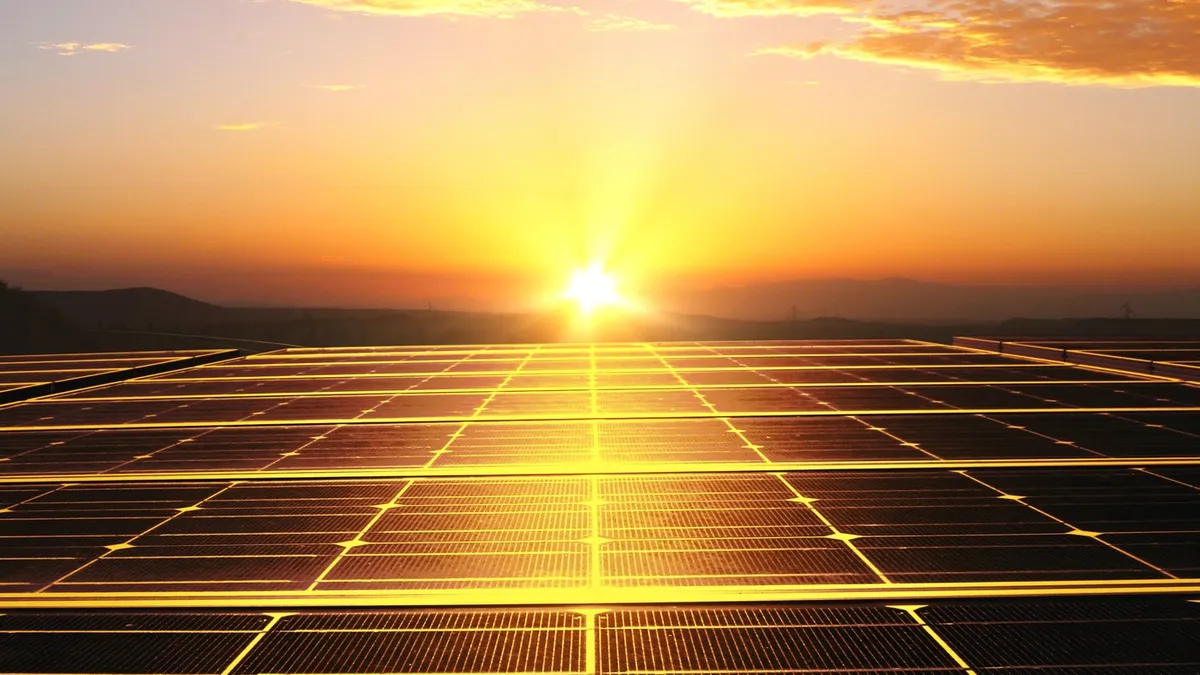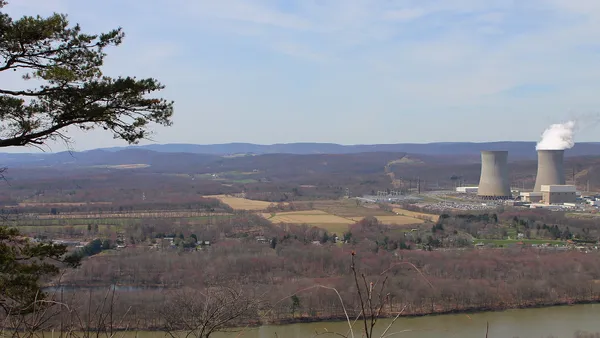Investing in clean energy technology – including distributed energy, storage and grid management systems – always held the difficulty of finding investors with a high tolerance for risk and lengthy timelines for returns.
But now it appears the stage is set for clean energy technology to benefit from a new wave of investment in the United States as investors take advantage of increased market certainty and public policy supportive of low-carbon energy solutions.
This is the narrative playing out at ARPA-E’s annual Energy Innovation Summit outside Washington, D.C. this week. In speeches and panel appearances Tuesday, as sector experts and major policymakers all indicated that the time is right for significant amounts of new money to flow into the clean energy sector.
“All the promises that have been made about climate change have to become real right now,” said Jim Yong Kim, president of the World Bank Group, at the conference, referencing the Paris climate accord in which more than 190 countries, including the U.S., pledged to cap the temperature rise at or below 2 degree Celsius and invest more in renewable resources.
ARPA-E stands for Advanced Research Projects Agency – Energy and was created in part because of the increasing interest – and demand – for capital that would take early-stage energy projects on the cutting edge of technology and give them a financial boost to develop a product and find private investors down the road.
That includes cutting-edge technologies in clean energy. But even more investment in such technologies at the early stage — where many get caught in the so-called "valley of death" — doesn’t guarantee their widespread use if utilities are not on board to deploy them.
We'll always have Paris
In the aftermath of the Paris accord, Rachel Cleetus, lead economist for the Union of Concerned Scientists, gave Utility Dive two main takeaways — that the agreement would send a signal to investors that clean energy is the future, and that utilities need to start preparing for that future with their investment decisions today.
“That long term [emissions] goal needs to set a clear path to where we need to get by midcentury,” she told Utility Dive. “That should send a clear signal to investors about the kinds of assets that right now we will be investing in … whether we’re talking about power plants or pipelines or electricity transmission.”
The increased certainty for investors in alternative energy includes the influence of the Obama administration’s Clean Power Plan. Despite the current freeze on implementation — the Supreme Court ruled earlier this month to stay the plan until after legal challenges are resolved — utilities are largely on board with the plan's goals and understand that further carbon regulations are likely in the future to meet the Paris accord's goals in midcentury and beyond.
Brian Wolff, vice president for policy and external affairs of the Edison Electric Institute also told Utility Dive during the Paris talks that his organization has long prepared for a low-carbon future.
“I’ve told people, 'Don’t look at 2030. Start looking at where you're going to be in 2050 and beyond,'” he said. “That’s exactly what they’re trying to plan for now – when the Clean Power Plan comes into compliance period, what’s the evolution of moving toward 2050 and beyond?”
Moving markets, making money
The stay on the CPP extends the compliance timeline for states and utilities by about two years, if it is upheld. But despite the uncertainty surrounding the plan, utilities are still planning for a renewables-heavy future, according to Utility Dive’s most recent State of the Electric Utility survey.
The vast majority of more than 500 utility professionals surveyed saw natural gas, utility-scale renewables and distributed generation as “the biggest winners in the future power mix," according to the report. But while there’s a strong future in utilities deploying distributed energy resources, at least two other hurdles need to be cleared.
One is that funding for the most cutting-edge of clean energy technology still remains the fringes of the mainstream for investors. Such technology — once it makes its way out of the incubation period (or laboratory) — often struggles finding investors with deep pockets and patience for longer return timelines. Many cutting edge projects forecast a timeline of five to ten years; with clean energy tech, it’s often as long as 20 years.
Needless to say, the timeline is one of the most off-putting aspects for those projects. But former Vice President Al Gore, who helped establish an investment firm focused on sustainable investing, said confidently at the ARPA-E summit it can be done.
“These are the best of times for innovation in energy,” Gore said. “You are in the right place in the right time…[but] the marketplace is a Wild West and very challenging.”
More importantly, he noted, “A lot of you will fail.”
“Only on a good day will one out of seven startups succeed.” And while investors have typically shied away from investing in clean energy technology, Gore was recently spotlighted in the Atlantic for doing well at that arena. His strategy? Incorporate externalities (workplace culture, social and environmental impacts) into the assessment of values.
“We focus more than just profitability of company,” Gore said. “We look at context of how they can contribute to the better performance of the company over longer term ... it’s a happy congruence between our desire to invest in values and finish job one correctly, which is get the best return for client and when you can do both simultaneously, then it puts pressure on firms and investor groups to take a closer look to how this might benefit them.”
Similarly, a panel of financial advisors echoed Gore’s sentiments, but noted that investment at early stage phase fell off significantly.
“We’ve seen significant falloff in traditional early stage investment right at the stage that we need it the most,” said John MacWilliams, the associate deputy secretary of the DOE, who moderated the panel about current and future trends for market investments in the clean energy sector.
Just down the road
Despite the current shortfalls in early-stage investing, there were indications at the conference on Tuesday that the market will likely shift in that direction. World Bank Group’s President Jim Yong Kim said as much as he told the audience that the WBG pledged nearly $30 billion annually aimed at tackling climate change. And part of that pledge will hopefully include investing in clean energy technology.
“If we don’t literally move the market in the direction of renewable energy then there’s just no hope,” he said. “[But] I just want you to know we’re doing everything we can to shift the market in the direction to have huge demand for your project.”
Already utilities have expressed interest in ARPA-E technology. The technical arm of the DOE, ARPA-E expanded its focus this year to include its Network Optimized Distributed Energy Systems (NODES) that aims to develop technologies to coordinate load and generation on the grid.
In addition, Austin Energy, the Texas city’s municipal utility, is paired up to test solar+storage as the largest project among six in DOE’s Sustainable and Holistic Integration of Energy Storage and Solar PV program (SHINES), which is part of the Grid Modernization Initiative that looks to improve the resiliency, security and reliability of the U.S. power grid.
Projects like those will be crucial to ensure that increased investment in clean energy technology results in widespread deployment and use of the products and services, Secretary of Energy Ernest Moniz told Utility Dive after his conference appearance.
“I think the technology direction we’re going in ... utilities are clearly at the beginning of needing to reinvent business models, and I think as they do that, utilities are going to have to be a lot smarter about technologies coming along, how to prepare, what do they do, how do they get regulatory systems that permit them to have the new business models,” Moniz said. “So it’s going to be a very interesting interplay, I think, between the business model, regulation and innovation.”
Moniz also acknowledged the shortfall of investment money in early-stage development in a Q&A session after his talk at the conference. But he expressed hope that the commitment to lower carbon emissions will open up capital streams.
“I do think, I certainly hope, I think we’ll see…a continued expansion of the amount of investment going into the whole chain of scale going into deployment,” Moniz said. “The commitment to lowering carbon has got to lead in incredible market expansion. The money is coming back into investment.”
A previous version of this article referred to World Bank Group President as Jim Kim Yong. This is incorrect as his name is Jim Yong Kim. This article post has been updated to reflect his proper name.














